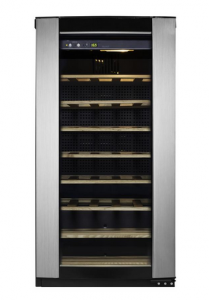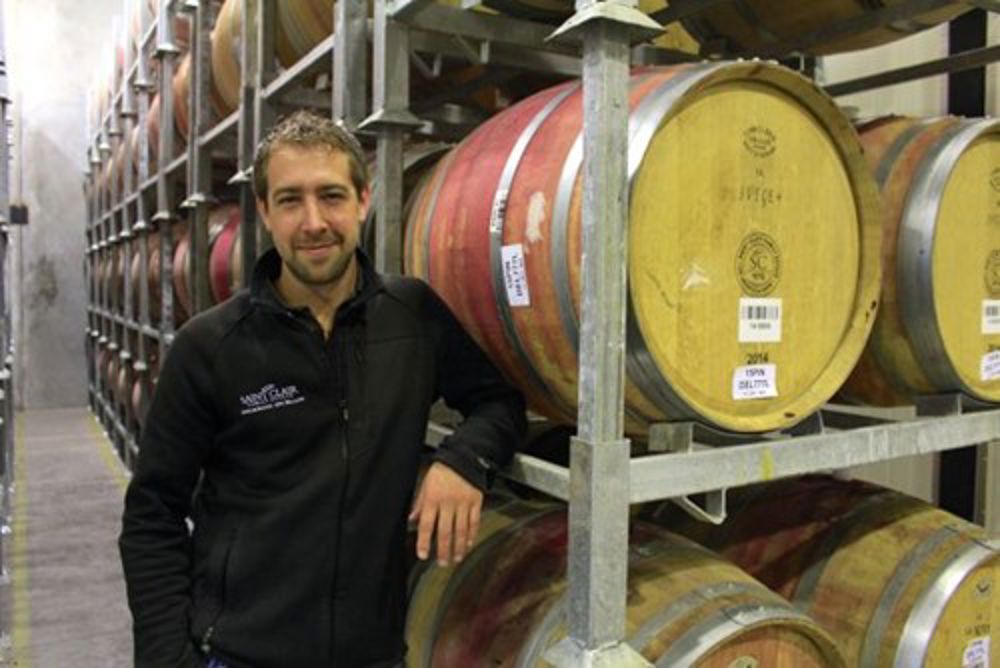-
Any wine enthusiast worth their salt will have a stash of wine in their spare bedroom wardrobe, dreaming of an underground cellar to store their collection in.

Saint Clair Family Estate white winemaker Stewart Maclennan
This month we’re giving away a Haier temperature controlled wine fridge on our Facebook page, so we invited Saint Clair Family Estate’s white winemaker Stewart Maclennan to share some tips on the best ways to collect, store and serve your favourite wines.
To Keep Or Not To Keep
First up, there is a difference between buying wine to drink straight up and buying wine to store. I’ve never bought wine to cellar from the supermarket. Buying wine to store takes some consideration and my purchases are based on suggestions from friends, distribution lists or top end online wine stores.
Stew’s Top Tips:
- Light and fruity wines may not always have good cellaring potential.
- Cheaply priced wines may not be suitable.
- White varieties such as Chardonnay, Chenin Blanc, Riesling and Grüner Veltliner can cellar very well.
- Red varieties including Cabernet Sauvignon, Merlot, Syrah and Pinot Noir will also age nicely.
Storage
Whether cellaring for an extended time or not, correctly storing your wine is immensely important. Wine is a living thing. If you leave a bottle in the hot sun in the back of your car for a day, the product inside will be altered. Ideally, you’ll store your wines somewhere with a fairly stable temperature, out of direct sunlight.
Obviously, temperature controlled wine fridges are the best for this, or a nice big underground cellar if you have a shovel and a good back.
A well cellared wine comes with the hefty price tag for its time in storage, so take on the task yourself. You’ll drink better, learn a great deal, impress your guests and may even save a little money.
Corks and Screw Caps
- Always check the cap integrity and don’t cellar a wine with a damaged screw cap.
- Store corks on their side, and screw caps on their side or upright.
- Keep the cork wet when cellaring.
- A quality cork will give you a more traditional bottle ageing, but can also be inconsistent, which can speed up the ageing process, increasing the risk of a corked wine.
Serving
Getting the serving temperature right is important, but also comes down to personal preference. There’s no right or wrong, apart from straight out of a four degree fridge, which is wrong.
A cold Riesling on a summer’s day is fine, but most wines will offer far more aromatically at a more ambient temperature.
Take white wines out of the fridge a good half hour before you intend to drink them. Open red wines an hour before you intend to drink them, and leave them on the bench.

Enter our competition to win this stunning wine fridge
If you are lucky enough to own a wine fridge, set it at twelve or fourteen degrees – the ideal temperature for cellaring your wines. It’s also the perfect temperature for serving white wines, but a little cool for many reds, so be sure to take the wine out earlier than you intend to drink it.
Love your wines? We’re giving away a stunning temperature controlled wine fridge from Haier. Click here to enter the draw.
Storing Wine At Home

Filed under:
- Design and Advice